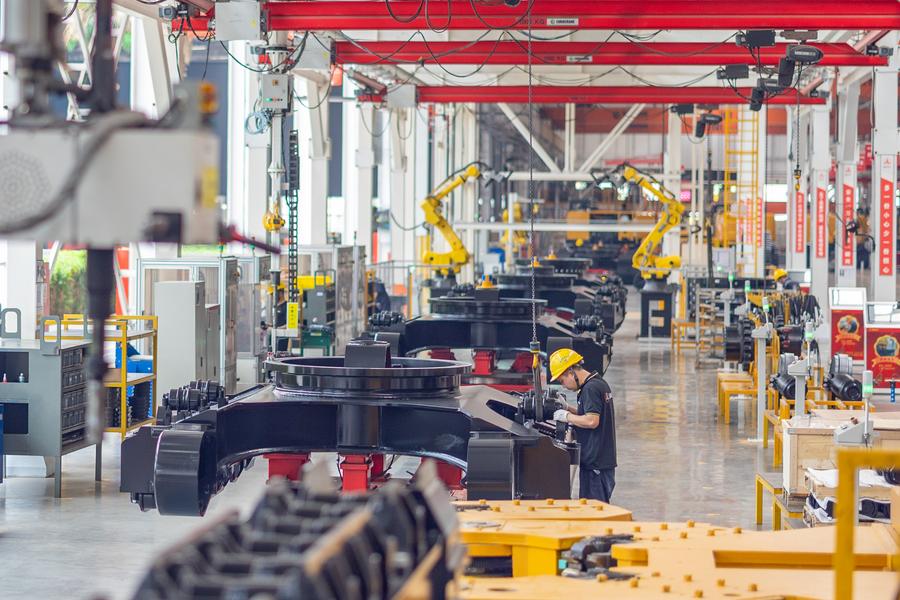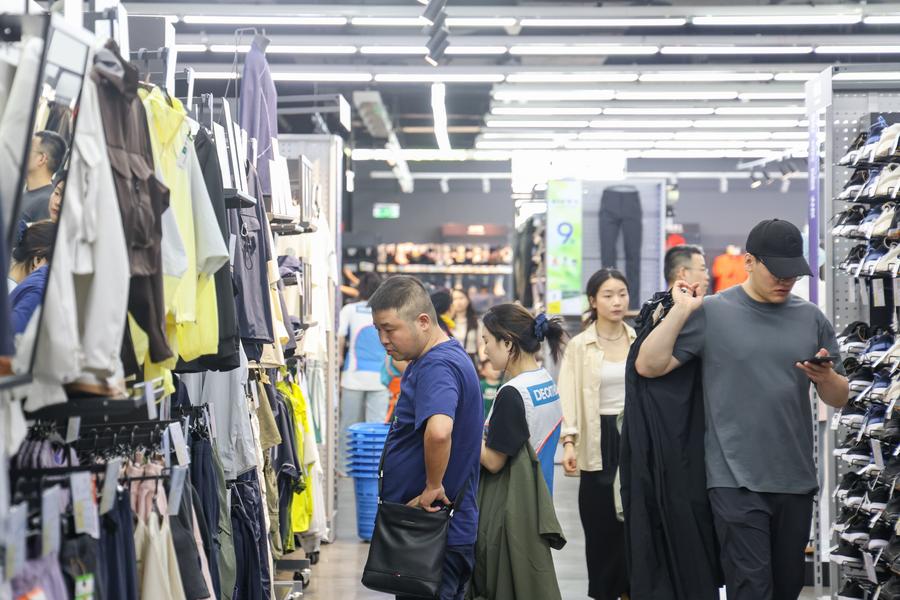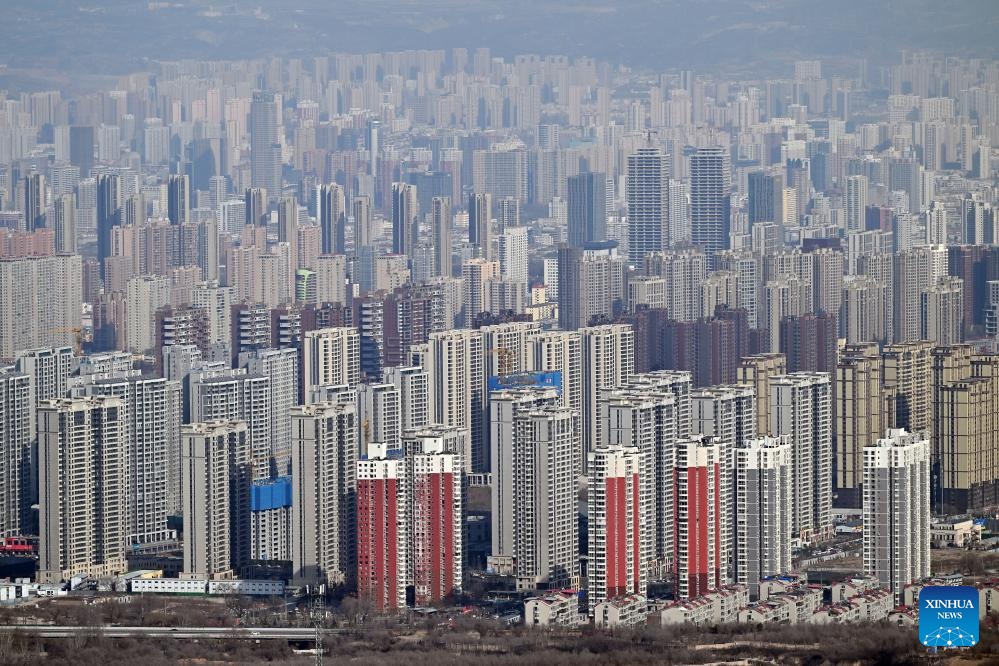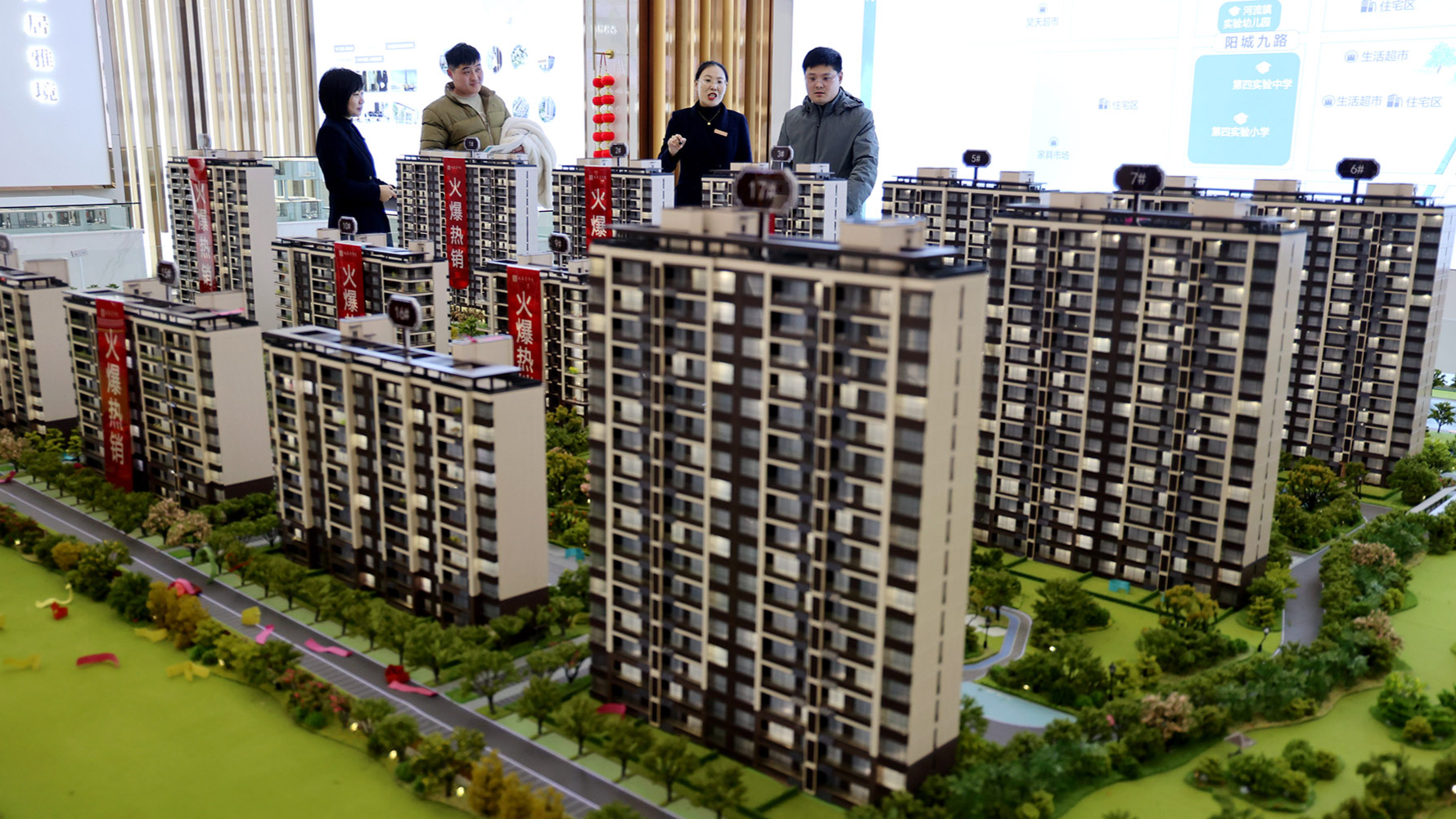
BEIJING - China's industrial production continued to see stable growth in April as the country's economic performance held steady against external headwinds.
China's value-added industrial output expanded 6.1 percent year-on-year in April, the National Bureau of Statistics said on Monday.
The manufacturing sector saw its value-added output climb 6.6 percent year-on-year last month, with that of equipment manufacturing and high-tech manufacturing up by 9.8 percent and 10 percent, respectively, according to the official data.
In the first four months of this year, the country's industrial output gained 6.4 percent compared to a year ago, the data showed.
The industrial output is used to measure the activity of large enterprises each with an annual main business turnover of at least 20 million yuan ($2.78 million).
With effective policy support, the industrial sector has maintained relatively rapid expansion this year, making solid progress in high-end, intelligent and green transformation, spokesperson for the bureau Fu Linghui told a press conference on Monday.
Monday's data showed the production of 3D printing equipment, industrial robots and new energy vehicles surged 60.7 percent, 51.5 percent and 38.9 percent year-on-year in April, respectively. In the first quarter of this year, the country's industrial profits amounted to nearly 1.51 trillion yuan, up by 0.8 percent from the same period in 2024.
Despite the positive trend, Fu cautioned that some enterprises still face difficulties in operations and called for more efforts to expand domestic demand and implement supportive policies to foster innovation-driven development.

Retail sales
On the country's consumption strength, the retail sales of consumer goods expanded 5.1 percent year-on-year, according to the bureau's data.
Total retail sales of consumer goods reached 3.72 trillion yuan last month, the data showed.
ALSO READ: China unveils measures to expand, upgrade domestic services consumption
Retail sales in the country's urban regions rose 5.2 percent year-on-year in April, while those in rural areas expanded 4.7 percent.
Driven by the government's consumer goods trade-in program, sales of home appliances and audio equipment surged by 38.8 percent last month, and sales of cultural and office goods jumped by 33.5 percent.
"In April, the combined retail sales of consumer goods related to trade-ins, including household appliances and audio-visual equipment, cultural and office supplies, furniture, communication equipment, and building and decoration materials, contributed to a 1.4 percentage point increase in the total retail sales of consumer goods," the bureau's spokesperson Fu said.
From January to April, the retail sales of consumer goods rose 4.7 percent year-on-year, accelerating from the 4.6 percent growth in the first three months, according to the bureau's data.
China's online retail sales went up 7.7 percent year-on-year during the first four months, sustaining relatively fast growth.
"As the effects of pro-consumption policies continue to take hold and consumer momentum keeps growing, the role of consumption in driving economic growth is expected to further strengthen," Fu added.

Fixed-asset investment
The official data also showed China's fixed-asset investment went up 4 percent year-on-year in the first four months of 2025.
Excluding the property sector, the country's fixed-asset investment grew 8 percent year-on-year during this period, according to the bureau.
Infrastructure investment rose 5.8 percent year-on-year, while manufacturing investment increased 8.8 percent.
ALSO READ: China's manufacturing PMI at 49 in April
By industry, investment in the primary industry grew 13.2 percent year-on-year, while secondary industry investment rose 11.7 percent. The tertiary industry saw investment decrease by 0.2 percent.
In the high-tech sector, investment in information services surged 40.6 percent, while computer and office equipment manufacturing investment increased 28.9 percent. Investment in aviation, spacecraft and equipment manufacturing grew 23.9 percent, and professional technical services investment rose 17.6 percent.

Urban unemployment
Meanwhile, China's job market remained generally stable in April, with the surveyed urban unemployment rate dropping on a month-on-month basis, Monday's data showed.
The surveyed urban unemployment rate on average in China edged down from 5.2 percent in March to 5.1 percent in April, according to the bureau.
In 31 major cities, the figure also dropped by 0.1 percentage point to 5.1 percent, the bureau's data showed.
During the first four months of this year, the surveyed urban unemployment rate on average was 5.2 percent, staying flat with the same period last year.
ALSO READ: China initiates program to boost employment among college graduates
China's steady economic growth, improving industrial performance and expanding new growth drivers, along with stronger support for employment among key groups, have helped keep the job market stable, said Fu, spokesperson for the bureau.
China has set a target for a surveyed urban unemployment rate of around 5.5 percent in 2025, and aims to create over 12 million new urban jobs.
As external uncertainties persist, greater efforts will be made to stabilize and expand employment, promote full employment, raise job quality and improve livelihoods, Fu added.

Home prices
On the country's property market, commercial home prices in major cities continued to stabilize in April, the data showed.
A survey by the bureau indicated home prices in 70 major cities stayed flat or dipped in April compared with the previous month. The prices continued to fall on a yearly basis, but the pace of decline further eased.
The real estate market remained broadly stable last month, though with variations across different cities, spokesperson for the bureau Fu said.
New home prices in first-tier cities, namely Beijing, Shanghai, Guangzhou and Shenzhen, fell 2.1 percent year-on-year in April, compared with a decline of 2.8 percent registered in March.
New home prices in these cities remained flat compared with the previous month, while second-hand home prices edged down 0.2 percent from March, according to the data.
READ MORE: China's residential property market showing signs of stabilization
Home prices in other major cities monitored by the bureau also posted narrowed price declines compared with one year earlier.
The bureau's data also revealed a narrowing in the year-on-year decline in the volume of new home sales during the January-April period, compared with the first quarter of the year.

Monday's data added to evidence that the property sector continued to stabilize, lifted by the government's policies unveiled over the past few months to support developers and improve market sentiment.
Since the fourth quarter of last year, the central government has stepped up efforts to halt the downturn of the real estate market.
An integrated policy package has been rolled out to boost investment, accelerate the renovation of old urban neighborhoods, expand the supply of affordable housing, and implement a "white list" mechanism to direct financial support to qualified developers.
Fu said these policies had helped stabilize the real estate market, but stressed that more efforts were needed to ensure the stable and healthy development of the market as adjustments continue.
He noted that the authorities will strive to strengthen policy coordination, increase the supply of "quality homes", and push forward urban renewal projects and the construction of affordable housing.
For the first time, the phrase "quality homes" appeared in China's government work report this year. The report, published in March, called for efforts to "improve the standards and regulations on building quality homes that are safe, comfortable, eco-friendly, and smart".


